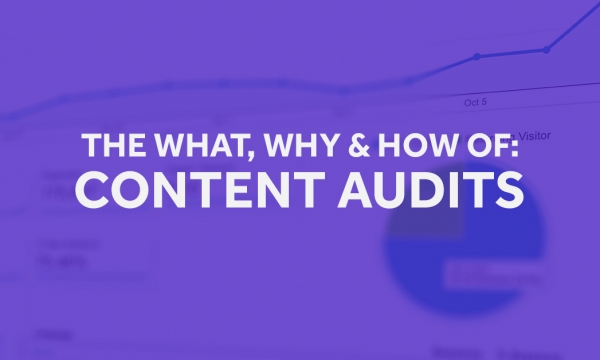
Millions of pieces of branded content are published to social media every day, but much of that content reaches just a tiny fraction of the audiences that many brands think it should reach. At the same time, search engines are creating multiple methods for audiences to answer their search query without leaving the search engine results page. In short, achieving organic reach with content is hard.
The phenomenon isn’t particularly new. Facebook went on record in June 2014 to state that yes, it was changing the way in which content from branded pages was displayed in user news feeds. Facebook pointed to two key reasons for this – the sheer volume of content being produced and published to Facebook, and news feed algorithms being much more selective over the content that is displayed during each session. A third suggestion, that Facebook is using its algorithms to optimise its revenue from paid promotion and advertising, has been refuted - although Facebook later admitted that paid promotion can help to make the problem go away.
Analysis in 2014 found that a typical brand’s Facebook post could be reaching as few as 6.15% of their fans, and that this figure dropped to just 2% for pages with more than 500,000 subscribers. Essentially, for every half a million people who followed a brand on Facebook, just 10,000 would see a post from that brand in their newsfeeds.
Since then, the picture hasn’t got any better. In 2016, Facebook again changed to the algorithm to, once again, favour content from friends and family, rather than from the brands that users follow. Research since that update suggests that organic reach fell 52% on the already low organic reach figures since the update was rolled out. In short, it’s a hard time to be a brand relying on organic reach on Facebook.
So how can, and how should, brands respond to the challenge?
A greater focus on video

As organic content reach has gone down, the reach of video content has gone way, way up. One report suggested that during a five month period in 2016, organic reach for publishers fell by a staggering 42%. But during the same period, the same analysis revealed an eight-fold increase in video content reach.
The survey found that over a period of 30 days, whilst video accounted for less than 1% of the content posted, it accounted for more than 7% of reach, 5.2% of likes and 11.1% of shares. The message is clear – video content is something that social networks are working hard to promote, and something that audiences are receptive to.
Now, there are some quirks and some question marks over how Facebook measures the true impact of video content, but the lid has started to be lifted on the secrets that Facebook uses to determine what makes video content successful.
This includes how much of a video users would typically watch, whether the users would unmute the video, whether users view the video in full screen or whether they click any links that are featured with the video.
For users, ‘percentage completion’ is a key metric. Facebook is analysing the videos that its audiences consume, understanding how much of a particular video they are consuming, and making decisions on the video content that is subsequently displayed.
For brands, this means that keeping your videos engaging, and understanding what other video content your target audiences are engaging with, is likely to help you improve the reach of your video content.
Go live

Live video is Facebook’s most recent content format, and it’s pushing it hard. The social network wants to steal a march on Twitter as the “platform of now” and really promote its form of ‘as it happens’ content.
Facebook is on record with the claim that live video is “more likely to appear higher in the news feed” and that means real opportunities for brands that can integrate live content into their marketing strategy.
It’s also claimed that users spend 3x more time watching Facebook Live content as its broadcast vs after the event, so there are clear engagement benefits to embracing live video across social channels.
Optimise for your audience queries

As consumers demand faster responses to their query, and as search engines continue to see speed and relevancy as a key selling proposition, we have seen the way in which those search engines are serving certain queries.
Search engines are becoming increasingly focused on service key user queries within the SERP (search engine results page) itself, rather than bouncing the user to another page. This saves the user a click, reduces the number of pages that need to load, and keeps the user within the search engine’s own ecosystem.
The most prominent example of these is Google’s answer box and rich snippets initiatives, which are serving various answers to common queries – typically ‘how to’ related searches – or prominently featuring trusted content for other types of search terms.
These search terms often come during important stages in the customer journey, so look at what your audiences are looking for as they come to discover your brand or your product, and look to see how you can secure prominent position for those search terms with an answer box result.
Our free guide, How to secure prime position with Google Answer boxes, explains how to do this in more detail.
Focus on trigger words

Whilst it is not something that the social networks are keen to discuss, evidence suggests that certain trigger words can make or break your post’s reach.
Social algorithms are reportedly down-ranking posts that contain keywords that are deemed to be aggressively sales focused or attempt to social interactions, so any mention of the words ‘like’, ‘share’, ‘free’ or ‘buy’ really should be avoided.
On the other hand, words such as ‘congratulations’, ‘birthday’ and ‘anniversary’ appear to generate a more positive impact on reach.
Whilst the influence of so-called ‘trigger words’ is unlikely to be conclusively proved, or unequivocally confirmed by the search engines, play the percentages and ensure that you aren’t needlessly harming your reach with negative keywords
Post strategically
Think carefully about the content that you create and match it to the most relevant platform or platforms. It’s very easy and tempting to post everything to each and every channel, but certain forms of content will be more effective than others on different social media channels.
Remember that in order to ensure that you are increasing your reach in an age where algorithms are becoming increasingly picky, you need to ensure that the content you do distribute is the most engaging content possible for the respective audience and channel. Posting large quantities of content across every channel is going to bring your engagement score down, and that is not going to send the sort of signals to the social networks that will encourage them to up-weight your content.
Be prepared to pay

There is an unavoidable reality to social media that, if you want to reach a critical mass, you are going to have to pay in order to do that. Whilst the measures discussed above can certainly stack the deck in your favour, there is invariably an element of who is prepared to pay getting that all-important place on the newsfeed.
Of course, this doesn’t mean that you have to burn through budget to get to the right audiences. Our ‘Content Distribution Playbook’ discusses a number of models that can help you to really zero-in on your target audiences and people who share the same social traits as your existing audiences and customers. Get it right, and investing in paid content distribution can generate significant ROI.




